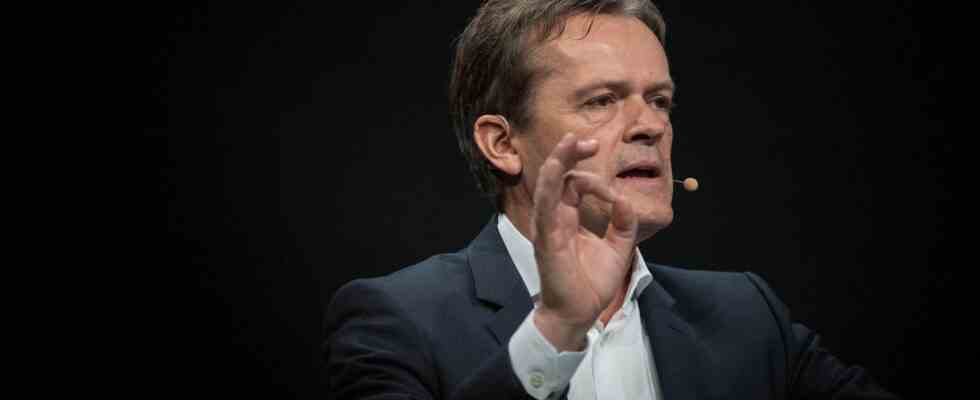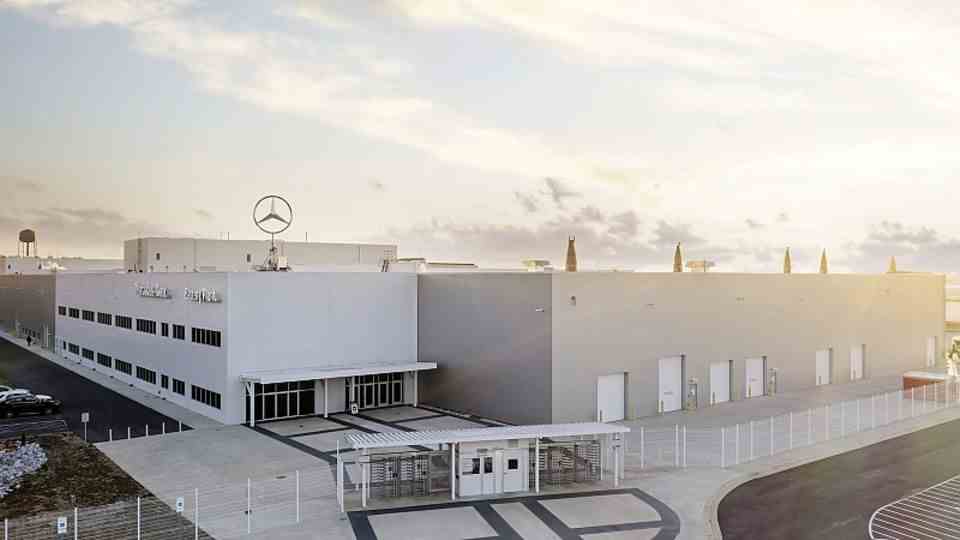Climate neutrality by 2039
Mercedes Head of Development Schäfer: How the car manufacturer wants to become the market leader in electromobility
Markus Schäfer during a conference. The Mercedes head of development has explained how his company intends to overcome the hurdles of electromobility.
© Marijan Murat/dpa | Marijan Murat / Picture Alliance
Mercedes plans to become an e-car brand by 2030. The carmaker wants to become the market leader in electromobility. Head of development Markus Schäfer explains how this is supposed to succeed – and what hurdles have to be overcome.
Mercedes’ goals are quite high: new plants for the production of batteries and electric cars, CO2 neutrality and finally a complete switch to electromobility. By 2030, Mercedes wants to become an electric car brand, provided the markets allow it. Mercedes head of development Markus Schäfer has named concrete goals as well as hurdles that still have to be overcome.
With a view to further CO2 reduction, Mercedes will install smaller batteries in its electric vehicles in the future. “We need more efficient batteries – in the coming years we will make significant leaps in efficiency in terms of energy density with high-silicon anodes or solid-state batteries,” says Schäfer in an interview with the car magazines “Autogazette” and “electrified”.
In order to be climate-neutral by 2039 as part of the “Ambition 2039” project, Mercedes will also “further expand” the generation of energy from electricity. “The path to renewable energies must be accelerated as much as possible in order to achieve independence.” According to Schäfer, Mercedes also wants to do without the use of steel and aluminum. For the German car manufacturer, there doesn’t seem to be any alternative to electromobility at the moment. Because Schäfer is convinced: “In the end, the electric car will prevail.”
In mid-March, Mercedes opened a battery plant in Tuscaloosa, Alabama. At the beginning, the aim was to produce batteries in a “six-digit number” annually. From the middle of the year, the SUV model EQS will be produced there, followed by the EQE as an SUV, according to Schäfer.
The challenge lies in the charging network – not in the range
In order to become the market leader in electric mobility, Mercedes wants to significantly improve the criteria “range, charging speed and charging convenience”. Its customers should no longer have to pay separately when charging their e-car. “We are also creating 700,000 charging points worldwide.” After all, significantly more charging stations would be needed.
“We are reducing the charging times, but the number of charging stations – if they work – is simply not enough. In addition, you still come across stations that don’t work,” says Schäfer. The Mercedes head of development admits: “The charging infrastructure is the biggest shortcoming.” Fast charging is “just right”. On the other hand, he sees no problem (anymore) in the existing ranges of electric cars.
Mercedes continues to rely on plug-in hybrids
Mercedes also wants to stick to the plug-in hybrids that have been criticized. “If I can drive purely electrically with a plug-in hybrid in everyday life, that’s a major step towards electromobility,” says the head of development. You can gain initial experience with a plug-in hybrid. That is why Mercedes has improved its plug-in hybrid vehicles from 30 over 60 kilometers to over 100 kilometers, certified according to WLTP.
Swell: car gazetteMercedes Benz


